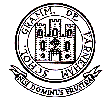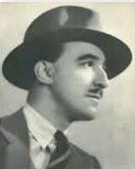

© Blunderbuss 2010-

blunderbuss



Farnham in 1939
 This extract is from H. V. Morton’s I Saw Two Englands, an account of “what I think may be a last glimpse of pre-
This extract is from H. V. Morton’s I Saw Two Englands, an account of “what I think may be a last glimpse of pre-
“Any man who has seen Farnham on a sunny day must think of it as a town of singular brightness and warmth. It is a town of red brick which looks from the outside as though it had been built in the reigns of Queen Anne and the first of the Georges, but inside it is often darkly beamed with Tudor oak.
“I think Farnham must have broken with its ancient past, and made itself fashionable, about two hundred years ago, when it was the biggest wheat market in England. There was a good deal of money about at that time, and no doubt the merchants of Farnham were only too glad to pull down the black and white Tudor house-
“When Defoe passed that way in 1724, a resident told him that on market-
“Farnham’s fame as a wheat market was due probably to the Dutch war, which made it dangerous to send wheat to London by sea; but, as soon as the war was over, the custom began of grinding the wheat and sending it as flour to London by boat; and so the great market gradually died away.
“Farnham then took seriously to hops, which had been grown in the district since Tudor times, as every reader of Farnham’s great son, William Cobbett, knows. And to-
“As soon as I arrived in Farnham, I climbed the steep hill to the Castle, which in its time saw quite a lot of the Cavaliers and the Roundheads. It is now the abode of the Bishop of Guildford.
“The remains of a circular mediaeval keep are shown to the public, but there is nothing much to hold the attention except a superb view from the top, over the surrounding country. The bishop’s park looks beautiful, and is open to the public.
“I then asked the way to the museum, and was told, to my astonishment, that Farnham has no museum! It is surely almost unbelievable that a town with a long history, whose main street is part of the Pilgrims’ Way, a town which sheltered Charles I in his distress, which gave birth to that lovable mass of indignation, William Cobbett, and also to Augustus Toplady, the author of “Rock of Ages,” has not had sufficient intellectual curiosity to gather together the relics of its past.
“I asked to see the Vernon Cap, a relic which those who take any interest in such things believe to be preserved at Farnham, either privately or with the Town Council. But no one seemed to know where it was!
“This is the story of the Vernon Cap. In West Street stands an old house, now empty, once known as Culver Hall, but for at least a century called Vernon House, after a Cavalier family which once lived there.
“When Charles I was being conveyed as a prisoner to London, from Hurst Castle on the Solent, he spent one night with the Vernons at Culver Hall. This was on December 22, 1648. In about five weeks’ time, the King walked through the snow of a January morning to the scaffold in Whitehall.
“Before he departed Charles said to his host that he had nothing to leave but a white quilted cap which he was in the habit of wearing in the morning. This cap became a treasured relic, which was handed on to successive owners of the house.
“In 1926, the owner, a Mr. Duncan Bethune, died, leaving the house and the Vernon Cap to his cousin, Mrs Rose Emily Morrison. His will contained the following clause:
“I declare that the cap, of King Charles I, contained in a case with an extract from George Vernon’s will, and now in Vernon House, are always to go with the said Vernon House, and, if Vernon House is sold, to still go with it, but, if the said house is pulled down, the said cap, etc., is to be presented to the Town of Farnham to be placed in the Council Chamber as a memento of the King’s visit, on condition that it is always kept there and that a plate is placed on the case inscribed as follows:
“ ‘ The Cap of King Charles I, given by him to Henry Vernon as a memento of his stay at Vernon House on the 22nd day of December, 1648, on his way from Carisbrooke Castle to London.' ”
“I was told that the house has been bought by a retired local builder since this will was made, but the cap did not go with it. So, for the first time for two hundred and ninety years, the Vernon Cap has been separated from the house and from the town of Farnham.
“I have heard three theories as to its whereabouts: that Mrs Morrison still has it; that it is in a Cambridge College; that it is in the possession of a peer in Wiltshire. No one doubts that it is still in existence and carefully preserved, but how extraordinary it is that a town should have allowed a romantic and valuable Stuart relic, to which it has a clear and ultimate claim, to pass out of its sight.
“Before I left Farnham I went to the “Jolly Farmer”, the perfectly named birthplace of Cobbett. It is a pub. house within a few yards of the little river. The sandy hill in which young Cobbett used to play is still there at the back.
“Beside the bar is the most pathetic thing in Farnham: a few cheap copies of Cobbett’s books in a small glass cast and kept under lock and key. It is at least good to know that one of the outstanding men of his time is not entirely forgotten in the place of his birth.”